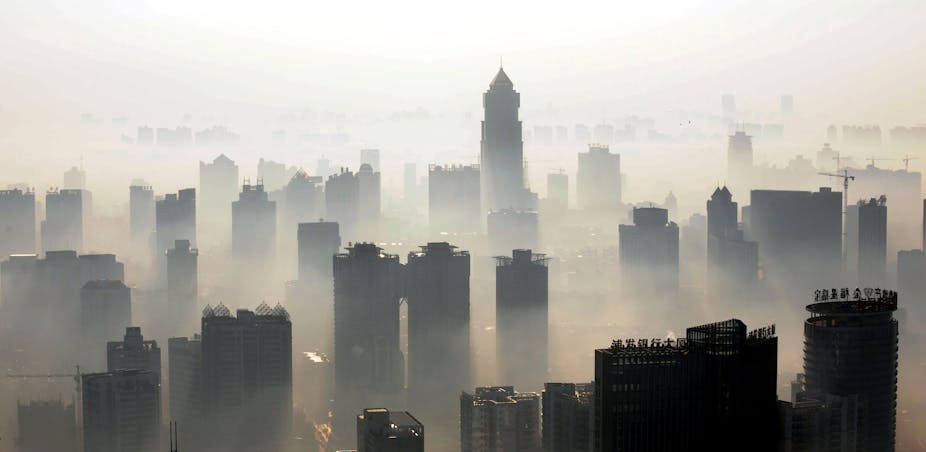Most of the discussion about slowing the impact of climate change has focussed on reducing carbon dioxide emissions. But carbon dioxide isn’t the only greenhouse gas. Methane, halocarbons and nitric oxide are also important contributors to climate change. Are we taking the right steps to reduce these emissions?
A new National Oceanic and Atmospheric Administration study Slowing climate change by targeting gases other than carbon dioxide suggests cutting emissions of the other greenhouse gases should slow down climate change.
CO₂ remains in the atmosphere for thousands of years. This long “residence time” means we need to reduce these emissions by about 80%.
This can be assisted by cutting emissions that have a shorter atmospheric residence time – methane, halocarbons and nitric oxide. These gases are reactive with ozone and water vapor, producing photochemical smog.

But as the paper notes, reducing these gases cannot be a substitute for significant reduction in CO₂ emissions.
The rise in CO, methane, nitric oxide and CFCs between 1978 and 2010 has an amplifying effect, further triggering ice melt and release of methane from permafrost.

Increasingly warm and dry conditions in the Arctic, for example, could thaw permafrost and increase the frequency of wildfires, both of which would send more methane and carbon dioxide into the atmosphere.
According to the IPCC, combined human-caused radiative forcing due to emissions and deforestation raised the atmospheric energy level. This was somewhat compensated for by the cooling effects of sulphur and other aerosols which reduce atmospheric energy rise.

In a key paper, Anderson and Bows question climate projections in view of the effect of multiple GHG and carbon cycle feedbacks.
These authors state:
If emissions peak in 2015, stabilisation of greenhouse gases would require subsequent annual reductions by 4% of CO₂.
If emissions peak in 2020, stabilisation would require subsequent annual reductions of 6% in CO₂.
These reduction targets far exceed any currently considered by the world’s major carbon emitters.
The 2 degrees C ceiling on global warming, to which the Copenhagen and Cancun meetings are committed in principle, would have already been exceeded had it not been for the cooling effect of sulphur aerosols emitted by industry.
Anderson and Bowe observe:
“It is increasingly unlikely that an early and explicit global climate change agreement or collective ad hoc national mitigation policies will deliver the urgent and dramatic reversal in emission trends necessary for stabilization at 450 ppmv CO2e. Similarly, the mainstream climate change agenda is far removed from the rates of mitigation necessary to stabilize at 550 ppmv CO2e. Given the reluctance, at virtually all levels, to openly engage with the unprecedented scale of both current emissions and their associated growth rates, even an optimistic interpretation of the current framing of climate change implies that stabilization much below 650 ppmv CO2e is improbable.”
Considering the long term consequences of carbon emissions, Eby et al state:
“It is found that the time required to absorb anthropogenic CO₂ strongly depends on the total amount of emissions; for emissions similar to known fossil fuel reserves, the time to absorb 50% of the CO₂ is more than 2000 yr. The long-term climate response appears to be independent of the rate at which CO₂ is emitted over the next few centuries. Results further suggest that the lifetime of the surface air temperature anomaly might be as much as 60% longer than the lifetime of anthropogenic CO₂ and that two-thirds of the maximum temperature anomaly will persist for longer than 10 000 yr. This suggests that the consequences of anthropogenic CO₂ emissions will persist for many millennia.”
Reducing non-CO₂ greenhouse gases like methane will be vital to reducing the impact of climate change. But it is not a replacement for cutting our CO₂ output. If we are serious about preventing runaway climate change, we must reduce both, and at far faster rates than we are currently considering.

